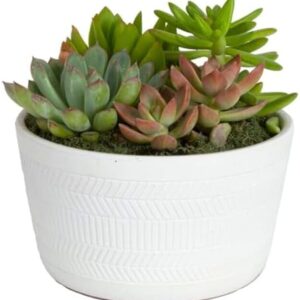Have you ever wanted to expand your garden without breaking the bank? Or maybe you’ve struggled to keep your favorite plants alive and thriving year after year. Well, there’s a simple solution that can help you achieve all of this and more – plant propagation.
Plant propagation is the process of creating new plants from existing ones. It’s essentially a way of cloning your favorite plants. And the best part? You can do it at home without any fancy equipment or expertise.
There are several methods of plant propagation, each with its own advantages and disadvantages. Some of the most common methods include seed propagation, cutting propagation, division, and layering.
Seed propagation is perhaps the most well-known method of plant propagation. It involves collecting seeds from a plant and sowing them to grow new plants. While this method is popular and relatively easy, it can take longer for plants to reach maturity compared to other methods.
Cutting propagation, on the other hand, involves taking cuttings from a parent plant and rooting them to create new plants. This method is quick and effective, and it’s particularly useful for plants that don’t produce viable seeds or are difficult to grow from seeds.
Division is another popular method of plant propagation. It involves dividing a parent plant into smaller sections, each of which can grow into a new plant. This method is particularly useful for plants that naturally form clumps or have multiple stems.
Layering is a less common but equally effective method of plant propagation. It involves bending a stem or branch of a parent plant to the ground and covering it with soil to encourage rooting. Once roots have formed, the new plant can be separated from the parent plant and potted up.
Regardless of the method you choose, plant propagation can bring numerous benefits to your garden. For starters, it allows you to expand your plant collection without spending a fortune on new plants. Instead, you can simply create new plants from cuttings or divisions of your existing plants.
Plant propagation also helps you preserve rare or hard-to-find plant varieties. By propagating them at home, you can ensure that these plants continue to thrive in your garden for years to come.
Furthermore, plant propagation can help you fill in gaps in your garden or replace plants that have died. Instead of rushing to the store to buy replacements, you can simply propagate new plants from your existing ones.
But perhaps the most satisfying aspect of plant propagation is the sense of accomplishment it brings. Watching a new plant grow and thrive from a cutting or division of a parent plant is incredibly rewarding. It’s like witnessing a tiny miracle in your own backyard.
If you’re new to plant propagation, don’t worry – it’s easier than you think. With a little bit of practice and patience, you’ll soon be propagating plants like a pro. And the best part? You don’t need any fancy equipment or specialized skills to get started.
To begin propagating plants, start by choosing healthy parent plants with strong stems and vibrant foliage. Take cuttings or divisions from these plants in the spring or early summer, when they are actively growing. Make sure to use sharp, clean tools to avoid damaging the plants.
Next, prepare a suitable growing medium for your cuttings or divisions. A lightweight, well-draining soil mix is ideal for rooting plants. You can also use perlite, vermiculite, or a commercial rooting hormone to encourage root growth.
Once you have prepared your cuttings or divisions, plant them in pots or trays filled with the growing medium. Place the pots in a warm, bright location, but avoid direct sunlight, which can scorch the plants. Keep the soil moist but not waterlogged, and mist the plants regularly to maintain humidity.
Over time, you will start to see roots forming on your cuttings or divisions. This is a sign that the plants are ready to be potted up into larger containers or planted out in the garden. Make sure to acclimate the new plants to their growing conditions gradually to avoid shock.
As you gain more experience with plant propagation, you may want to experiment with different methods and techniques. Some plants propagate more easily from cuttings, while others prefer division or layering. By trying out different methods, you can discover what works best for each plant.
In conclusion, plant propagation is a valuable tool for any gardener looking to expand their plant collection, preserve rare varieties, or simply enjoy the satisfaction of creating new plants from old ones. With a little practice and patience, you can harness the power of plant propagation in your own garden and watch it flourish and prosper.






